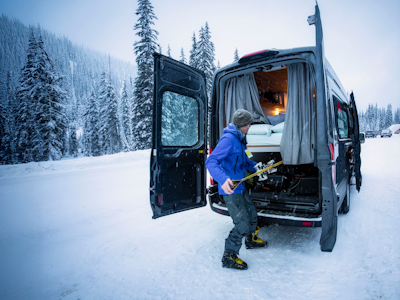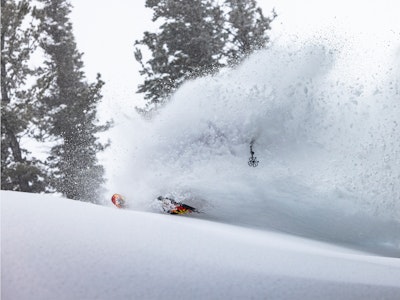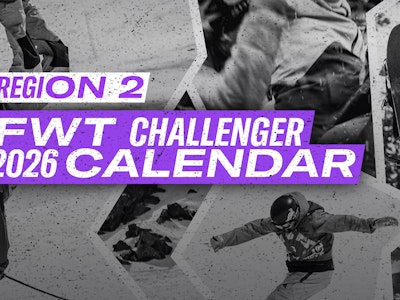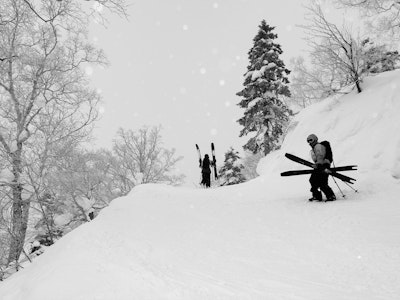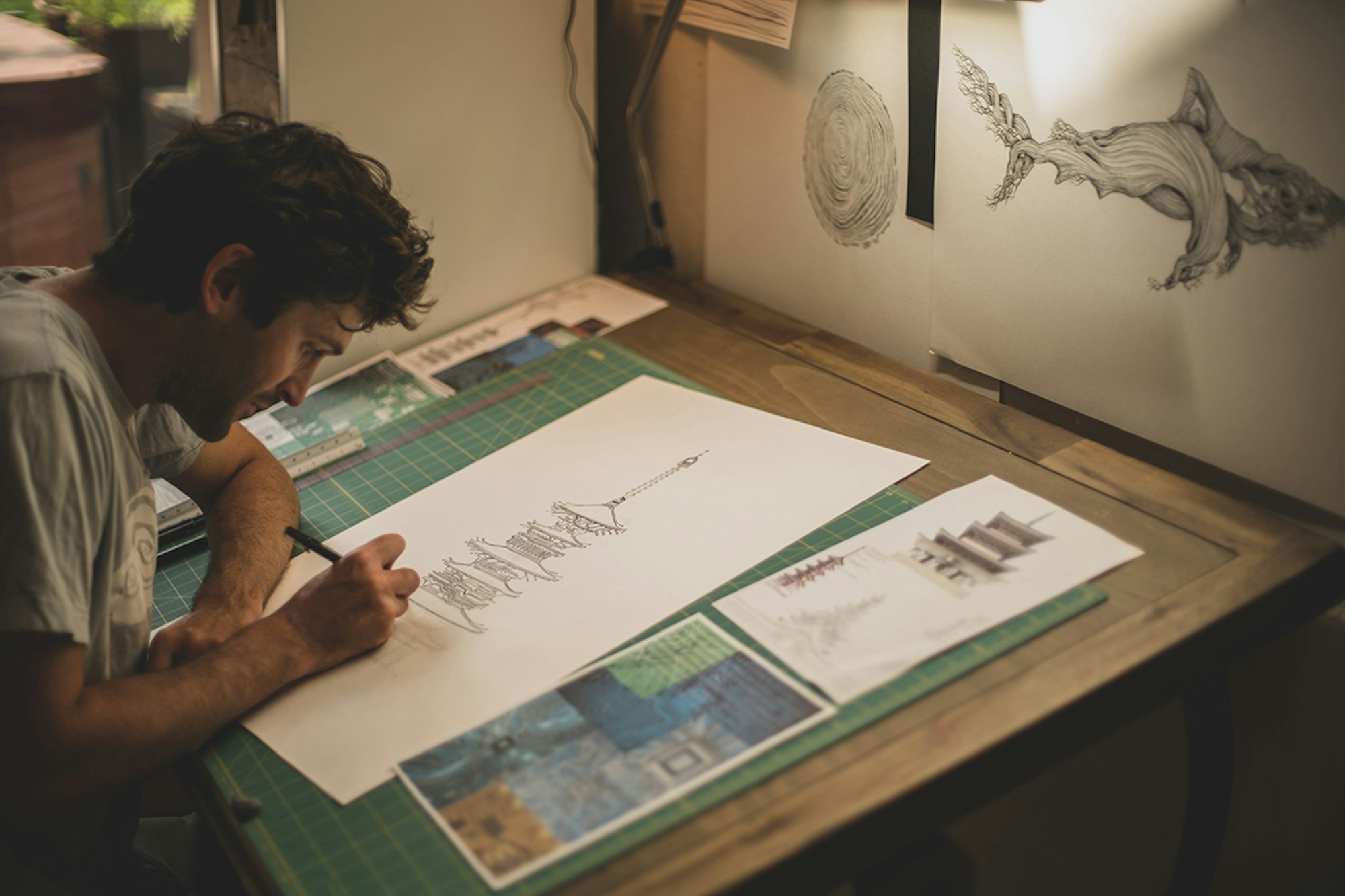WORDS • Bryan Reynolds
Almost ablaze still you don't feel the heat
It takes all you got just to stay on the beat
You say it's a living, we all gotta eat
But you're here alone, there's no one to compete
If mercy's a business, I wish it for you
More than just ashes when your dreams come true.—Robert Hunter, Grateful Dead, "Fire on the Mountain" Skiers want “stoke,” we quest for it, we generate it, we are inspired by it, we live it. No expression is more elative for skiers than: “I am stoked.”
Stoke is a state of beingness, an affective presence, a special manifestation of becomings. What I like to refer to as “becomings” is processual awareness and transcendence by which people reconfigure, transform and expand their physical, cognitive and emotional aspects and scope—their consciousness, subjectivity and proprioceptive attunement. Becomings are what allow us to comprehend and navigate the world, and to occupy it gracefully. To understand and successfully socialize with others, we “become” them by imagining what they are thinking and feeling. We identify with them. This enables us to better listen, relate and communicate. We also undergo becomings with the environment—its minutiae, energies and broad impressions. To cross a traffic intersection safely, for instance, we become all the variables: the different cars, trucks, bicycles, other drivers, pedestrians, road conditions, time of day, sources of light and so on. We assess their impact, structure and predictability. Although not commonly intentional, becomings happen actively through acknowledgment and empathy with other people, characters, creatures, things or ideas—anything real or imaginary.
Yet one does not directly experience becomings-stoked, even while we often create conditions for it. Such productive openness to becomings precipitates readiness for the stoke. Stoke is an emergent property, a byproduct of conditions for which there is no exact formula. When stoked in relation to them, one becomes sunshine, love, spirituality, the mountains, the forest—their aura, their energy. When skiing, one becomes their skis, the terrain, their lines, the environment. When making art, one becomes their brushes, paint, the canvas, the sculpture and so on: one becomes their art through processes of ideation and manifestation, and this, too, generates stoke. Uniquely affective, stoke is mutually generative becomings, the primary effects of which are profound excitement and euphoric connectivity and universality.
In the parlance of skiers, “stoke,” the noun, is the force of fun, creativity, unity, elation, all of which Benchetler captures brilliantly in Fire on the Mountain. As professional skier, visual artist and filmmaker Sage Cattabriga-Alosa explained in my interview with him, “Stoke is huge! It describes the energetic flow that comes from a combination of your crew, mountain environment and yourself. It’s part confidence, part inspiration, part excitement and can grow into something beneficial for yourself as well as being able to spread to others. It’s the articulation of that flow-state connection we have where we are truly in the moment.” Here I want to emphasize the procreative power of stoke. We are “stoked” on a fresh powder day for all the reasons Cattabriga-Alosa shares, but none more fundamental than the prospect of carving first tracks on pillows of virgin snow, of being among the first skiers to express oneself on the remarkable and delightfully ephemeral tabula rasa gifted us by Mother Nature.
In this respect, every skier is an illustrator, a sculptor, a dancer. Every skier is an artist. But this is not just because the mountains are our canvases. What Benchetler told me about the relationship between his skiing and painting is typical of skiers who have ventured into other artistic media: “When skiing, I’m constantly observing my surroundings and the formations and details of mountains, rocks, trees, clouds, snow formations, which I inevitably take back with me and try to translate to paper at some point. When I’m painting, I’m just trying to dig into my memory, not necessarily thinking of the act of skiing, but more of my overall experience with the mountains and nature.” The “experience” that Benchetler speaks of is reminiscent of artists throughout history who attribute their inspiration to nature, genius, muses, love, divinity, supernatural entities, etc., all giving a mystical quality to artistic expression. Cattabriga-Alosa elaborated, “I find that what I am looking for when creating art, whether visually or the way I look at skiing as a sort of canvas, I’m looking for that unique expression and different way of looking at the world, often tapping into the otherworldly aspect outside our dimensional reach.”
What we do, visualizing or making artwork or skiing a line, whatever we do, even imagining “outside our dimensional reach,” actually changes the neuronal circuitry of our brains, according to leading neuroscientist Andrew Newberg (Thomas Jefferson University). The more we do something, the more our brain changes in line with the requirements, aesthetics and beliefs of that practice. This adaptive dynamic, as a chief factor, is crucially important to understanding the skier’s mind in light of the newest, digital-technology-driven research on functional connectivity in the brain during episodes of creativity, as pioneered by cognitive neuroscientists Roger Beaty (University of North Carolina, Greensboro), Mathias Benedek (University of Graz) and Daniel Schacter (Harvard University). Their findings, which are consistent with the accounts of the relationship between skiing and artistic production articulated by professional skier-artists themselves, suggests not only that all skiers demonstrate better-than-normal capacity for creativity and improvisation in other domains (off the hill), but also that designing and making art in any media will make you a better skier.
Using functional magnetic resonance imaging (fMRI), the neuroscientists have identified a number of brain networks that are responsible for primary cognitive and attentional processes. Critically, they show that two brain networks—the “executive control network” (EN) and the “default mode network” (DMN)—previously thought to remain separate, even opposing, collaborate to generate certain forms of creativity. EN regulates cognitive processes that involve externally directed attention, including short-term memory, integrating multiple variables into a single thought-stream, and multi-tasking. DMN motivates spontaneous and divergent thinking, which includes mind-wandering, social cognition, self-narrativizing, episodic or future thinking (like how one plans to ski a line or shoot a film), and other processes that allow for less regulated flows of thoughts, emotions and sensations. DMN facilitates the exploration of new associations and combinations as well as the subsequent production of new ideas. When EN and DMN work in concert, high-intensity creativity thrives because DMN spontaneously generates ideas that the EN then evaluates according to possibility, risk and cost (such as when assessing the weather, snow quality, and features in the backcountry). Moreover, neuroscientists found weaker functional connectivity within EN when it is not working with DMN to complete a task that requires innovation and improvisation. Given that EN works for control, this finding is consistent with the decreased inhibition seen during creativity in effect of DMN activation, in other words, skiers, because they regularly activate collaboration between EN and DMN when navigating variable terrain, are likely to excel creatively and take personal risks in other domains off the mountain as well.
In this context, let’s consider the quintessential, legendary skier-artist Eric Pollard. Pollard is a professional skier who, for almost twenty years, has been progressing the sport as an engineer of new ski technologies, as an accomplished illustrator and designer of skis and outdoor adventure apparel and as a filmmaker who has made, often in collaboration with Benchetler, some of the most impressive ski films in history. Pollard’s latest film, Drawn From Here, is a heartfelt autobiographical sketch exemplifying synchronicity of EN and DMN networks, as it shows, explicitly through linking imagery and narrative, the complexly reciprocal relationships between nature, Pollard as skier-artist and Pollard’s various creations across sport and visual art domains. The following words of Pollard’s succinctly explain the value and mutuality of the relationships: “Just like a skier has a ‘style’ of moving through the air, or making a turn, an artist has a style produced by their perspective. I find it difficult to put into words, the media that I have chosen to offer up my perspective is much more visual. When I’m on my skis, or capturing something on film, or painting a subject informed from an experience, I’m in the moment.”
Other skier-artists echo Pollard’s description of the resonance between creativity and expressions as both a skier and artist. Mimi Kvinge, a professional painter and avid skier, also identifies the interactivity between EN and DMN networks when she talks about her creative process, also hinting at the invaluable force of stoke underlying the artistic drive: “When painting, you kind of lose track of time. My heart rate is elevated. But at the same time, I am very calm, but also very, very focused. And the same thing with skiing. It’s this graceful, creative expression where you kind of lose sense of your own self and your own being. There is no ego involved. You’re just doing what you’re doing.” Pollard’s reference to the “moment” and Kvinge’s account of time-warping, self-dissolving “focus,” as Cattabriga-Alosa explains, is not just “flow-state,” but also immense joy and enthusiasm, together affecting “stoke,” an active and expansive state of awareness that neuroscience demonstrates is vital to creativity inasmuch as it synchronizes brain and body through the sympathetic and parasympathetic modes of autonomic nervous system.
The sympathetic system, also known as our arousal system, activates our fight, flight or freeze responses to stimuli that are frightening, perturbingly unfamiliar or highly challenging—in all cases scary. It is what causes the body to be excited, alert and functional; it prepares the body for action. Alternatively, the parasympathetic nervous system regulates digestion and heart rate during times of rest. The two systems work together to balance the body’s responses to changing conditions, from calm to stress. The skier-artist, who simultaneously synchronizes the EN and DMN, exemplifies this balance, especially when achieved during the flow-state. Pollard perfectly describes the generative process of such inspirational synchronicity: “While skiing downhill, I only think about skiing the terrain in front of me. When I stop sliding… ideas just come to me. I’m always conscious of how the light is moving in the sky and interacting with the landscape. Because of that awareness of light, I’m bombarded with concepts on ways to capture the moments I experience on film. A lot of the time, I will just notice something about how my skis are performing, and from that, I’ll ideate ways to optimize shape, flex or any other design element. Other times, there will be something that stands out to me, some shape, texture or color in or on the hill that could be translated to a painting technique or subject for a painting. The opposite is true when I’m off the hill, working in design, film or anything I’ll be focused on that task, but in-between the moments of focus I’ll think of something that could be interesting on my skis. In that way, all the modes of expression are interrelated.”
Love skiing. Love the stoke. Let me suggest, following the leads of Benchetler, Cattabriga-Alosa, Kvinge, Pollard and many other extraordinary skier-artists not named here, that you try representing any meaningful aspect of your skiing experience through some other form of artistic media—writing, painting, film, etc. Reciprocally, in effect, you will manifest your artistic production back on the hill, bringing all the modes and systems symphonically together. At the very least, you will become exponentially more in-tune and creative. Your stoke might even become auto-generative. You will love skiing, enjoy the stoke and make art even more. Become the stoke you stoke!

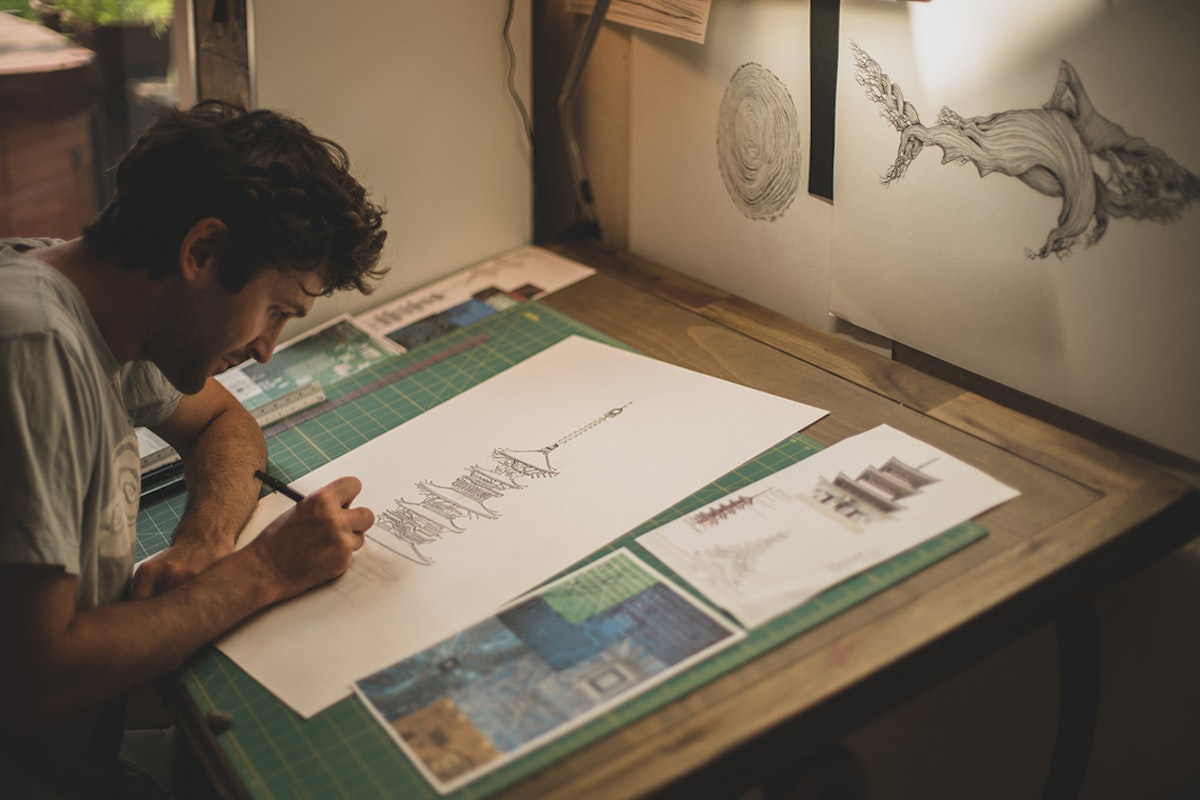

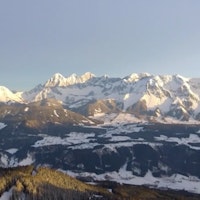
![[GIVEAWAY] Win a 4-Night Karma Campervan Rental and go Ski the Powder Highway](https://www.datocms-assets.com/163516/1767816935-copy-of-dji_0608-1.jpg?w=200&h=200&fit=crop)

![[GIVEAWAY] Win a Legendary Ski Trip with Icelantic's Road to the Rocks](https://www.datocms-assets.com/163516/1765233064-r2r26_freeskier_leaderboard1.jpg?auto=format&w=400&h=300&fit=crop&crop=faces,entropy)

![[GIVEAWAY] Win a 4-Night Karma Campervan Rental and go Ski the Powder Highway](https://www.datocms-assets.com/163516/1767816935-copy-of-dji_0608-1.jpg?auto=format&w=400&h=300&fit=crop&crop=faces,entropy)

